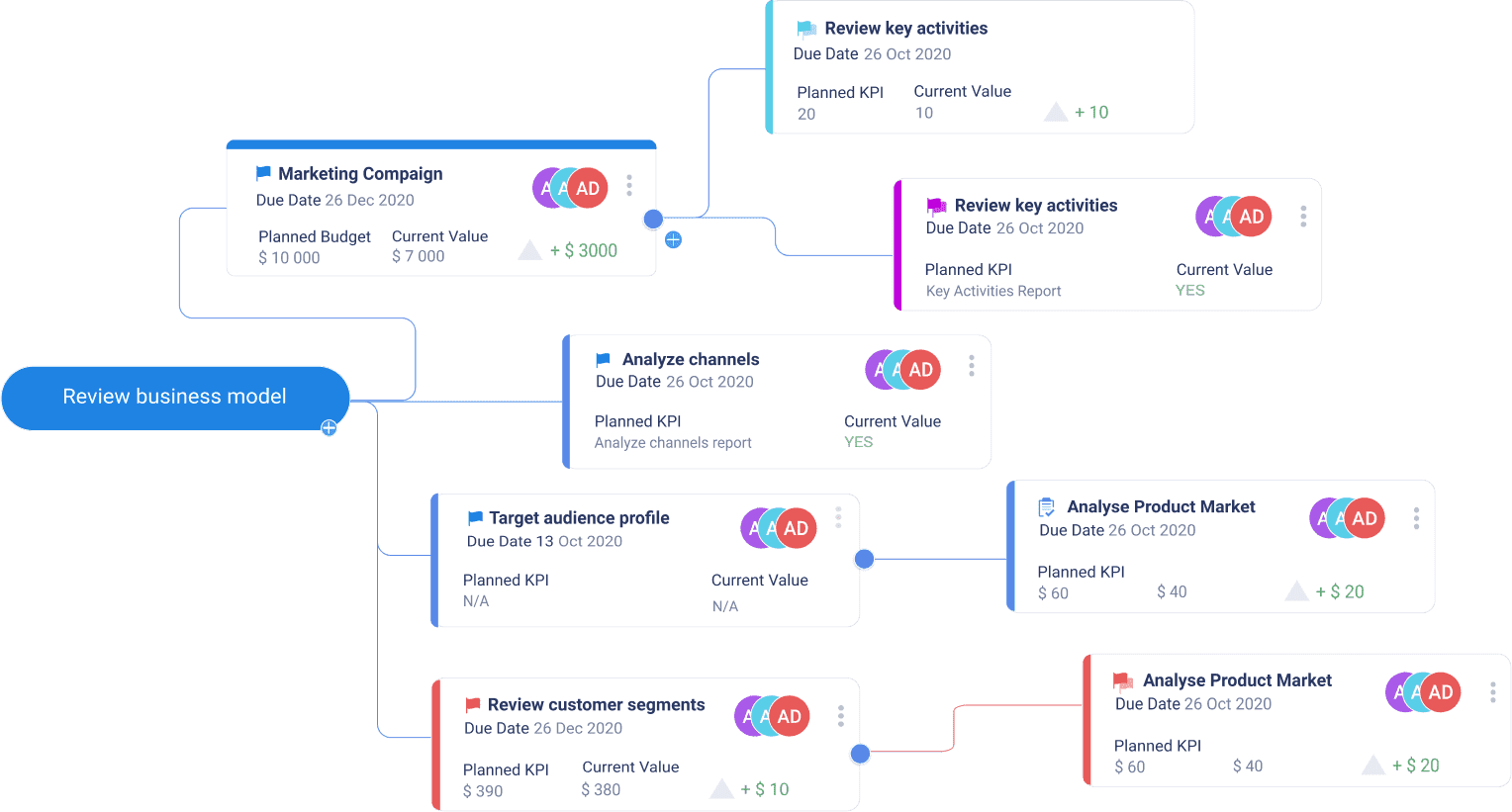What is Prioritization?
In product management, prioritization is a process of evaluating the relative importance of work, tasks, and ideas to minimize waste and add value to the product I the most effective and quickest way. Product prioritization is an open process that responds promptly at changing conditions, reallocated resources and new market and customer demands. If effective, it supports the team and reduces risks of working on unwanted and unnecessary tasks.

Best practices for prioritization
Product prioritization is a challenging balancing activity, which includes finding the best path to satisfy often conflicting demands from stakeholders. To make it smoother, you can follow several tips:
- Prepare for the prioritization session by studying customer wishes and demands
- Focus only on the biggest items to prioritize so that you are not lost in detail
- Group tasks into strategic themes, such as usability
- Pre-estimate the cost of work and resources needed
- Collaborate with the team to have different perspectives
Prioritization frameworks
A critical characteristic of product prioritization is that it is a highly disciplined and data-driven process. Without customer data and market research we’d inevitably fall into the pitfall of setting priorities on our gut feeling chasing popularity and ending up in building an unusable set of features. To avoid this, there exist several product prioritization frameworks, or strategies, the most popular of which are the following:
Kano Model
This model is based on the premise that customer satisfaction depends on how well the feature is implemented. It has two axes: satisfaction, or delight, vs. functionality, or achievement, and classifies features into four quadrants:
- Expected that must be present
- Normal – the right set of usual performance features
- Exciting – unexpected features that make the product stand out
- Indifferent that do not impact customers
RICE framework
This framework relies on four factors to evaluate ideas:
- Reach – how many people will be affected?
- Impact – how will the feature impact an individual person?
- Confidence – can you trust the data you have collected?
- Effort – how much will it take for the team to complete the task?
MoSCoW method
The MoSCoW method categorizes all features into four buckets:
- Must have – bare-minimum features required to launch the project
- Should have – features that are essential for the product success
- Could have – desirable, but not critical features
- Won’t have – out-of-scope items
This method is particularly effective when it is necessary to define strict release criteria.
Opportunity Scoring
Opportunity scoring identifies features that are essential for customers but are underdeveloped. It asks customers to answer two questions ranking each feature from 1 to 10:
- How important is this feature?
- How satisfied are you with it?
Features with the highest importance and the lowest satisfaction scores are opportunities for the team to focus on.
ICE Scoring Model
A quick model based on ranking each feature from 1 to 10 along with three axes:
- Impact – how important is this feature?
- Confidence – how confident are we in the outcomes
- Ease – how easy is it to implement?
The total average number is the ICE score for the feature.
Value vs. Complexity Quadrant
This is a 2 x 2 matrix with “Value” plotted against “Complexity”:
- Value – the customer’s and business benefit
- Complexity – the effort required to deliver this feature.
All features easily fall into four quadrants representing different priority levels:
- Quick wins – valuable and easy to implement
- Potential features – large but impactful projects
- Fill-ins – nice-to-have features
- Time sinks - wasteful activities to avoid
Eisenhower Matrix
Eisenhower Matrix is another 2x2 grid that sorts tasks into four categories:
- Important and Urgent – top priority tasks
- Urgent and Not Important – time-sensitive tasks that can be delegated
- Important and Not Urgent – tasks that can be scheduled for the future
- Not Important and Not Urgent – tasks that should be eliminate
Though there are many seemingly similar techniques to assign priorities, the key to success is to choose a strategy that works for your project and stick to it.



